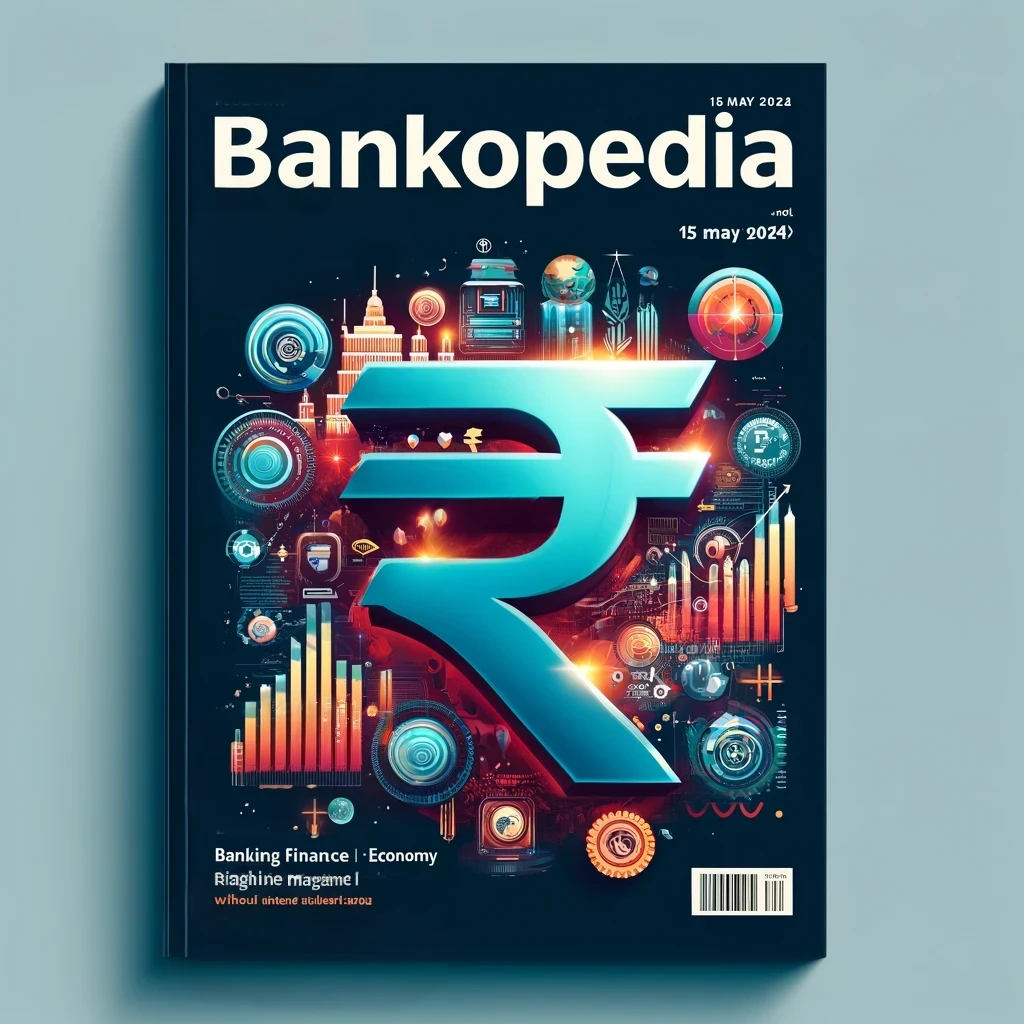Welcome to Daily Banking Digest, your premier source for the latest news and insights on May 15, 2024, focusing on banking, the economy, and finance. Our platform offers a comprehensive overview of the day’s most critical financial stories, market trends, and economic developments. Whether you’re a professional in the financial sector, an investor monitoring market movement, or someone interested in staying informed about the economic landscape, Daily Banking Digest provides reliable, up-to-date information.
Join our Telegram Channel for Daily PDF in your Inbox – Click Here
Table of Contents
Indian Auto Industry Records Robust Growth in FY25, Sales Surge by 25% in April
In April 2024, India’s automotive industry witnessed a modest growth in passenger vehicle sales, while two-wheeler and three-wheeler sales surged significantly. The utility vehicle segment drove the growth in passenger vehicles, while the passenger car segment declined. Overall, the automotive sector reported a robust performance, driven by positive consumer sentiment and government initiatives.
Key Points:
Passenger Vehicles:
- Total sales grew by 1.3% to 3,35,629 units.
- Passenger car sales declined by 23.4% to 96,357 units.
- Utility vehicle sales grew by 21% to 1,79,329 units.
- Van sales increased by 15% to 12,060 units.
Two-Wheelers:
- Total sales grew by 31% to 17,51,393 units.
- Motorcycle sales increased by 34.4% to 11,28,192 units.
- Scooter sales grew by 25.2% to 5,81,277 units.
Three-Wheelers:
- Total sales grew by 14.5% to 49,116 units.
Overall:
- Total sales across all categories grew by 25% to 21,36,157 units.
- Positive consumer sentiment and government initiatives contributed to the growth.
- Above-normal monsoon rainfall, policy continuity, and government focus on manufacturing and infrastructure are expected to support continued growth in the auto sector.
CBDT Enhances Transparency in Compliance: New Feature Empowers Taxpayers to Verify Information Accuracy
The Central Board of Direct Taxes (CBDT) has introduced a new feature in the Annual Information Statement (AIS) that allows taxpayers to track the status of their feedback on financial transactions. This feature provides transparency and enhances taxpayer services by displaying whether the feedback has been acted upon by the source and the response provided.
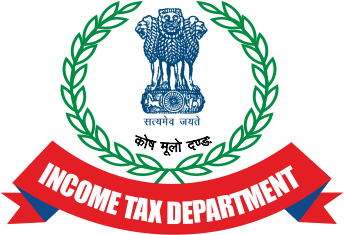
Key Points:
1. Feedback Confirmation Status:
- Taxpayers can now view the status of their feedback on AIS transactions.
- The status includes whether the feedback has been shared with the source, the date it was shared, the date the source responded, and the source’s response.
2. AIS Availability:
- AIS is accessible to registered Income Taxpayers through the compliance portal on the e-filing website.
3. Information Sources:
- AIS includes financial data from Tax Deductors/Collectors and Reporting Entities.
4. Correction Process:
- In case of partial or full acceptance of feedback, the source must correct the information by filing a correction statement.
Leather Exports Plummet 10% in FY24 Amidst Subdued Demand from US and Europe
India’s leather and leather goods exports declined by 10% to $4.28 billion in FY24 due to reduced demand from major markets like the US and Europe. Tamil Nadu, the largest exporter, saw an 18% drop in exports, while Uttar Pradesh marginally increased its share. The decline is attributed to the global economic slowdown and the Russia-Ukraine war. However, investments from Taiwanese companies in Tamil Nadu are expected to boost exports in the coming years.
Key Points
Decline in Exports – Exports of leather and leather goods declined by 10% to $4.28 billion in FY24. – Tamil Nadu, the largest exporter, saw an 18% drop in exports. – The decline was primarily due to reduced demand from the US and Europe.
Impact on Tamil Nadu – Tamil Nadu’s contribution to total leather exports dropped to 37.77% in FY24. – The decline is attributed to the global economic slowdown and the Russia-Ukraine war.
Uttar Pradesh’s Performance – Uttar Pradesh marginally increased its share in leather exports to 27.77% in FY24. – Exports from Kanpur, which manufactures safety leather products, remained stable.
Reasons for Decline – Recession in the US, UK, and Eurozone due to the Russia-Ukraine war. – The US alone saw a 35% decline in exports.
Positive Outlook – Investments from Taiwanese companies in Tamil Nadu are expected to boost exports in the coming years. – The Southern Region is witnessing positive trends in exports, especially in sports footwear.
Taiwanese Investments in Tamil Nadu – Pou Chen Group plans to invest ₹2,302 crore in non-leather footwear manufacturing. – Long Yin Investment plans to invest ₹1,500 crore in a greenfield non-leather footwear unit. – TKG Taekwang plans to invest ₹1,250 crore in a greenfield non-leather footwear unit. – Hong Fu plans to invest ₹1,000 crore in a footwear manufacturing facility. – Feng Tay is constructing a third factory in Tamil Nadu.
India Considers Initiating India-UAE Leg of IMEC Project
Due to the ongoing West Asia crisis, India is considering initiating work on the eastern leg of the India-Middle East EU Economic Corridor (IMEC) project, which would connect India to the UAE. The project aims to enhance trade and economic cooperation between Asia, Europe, and the Middle East.
Key Points:
Project Overview: – IMEC is a proposed 4,800 km long trade corridor comprising railroads, ship-to-rail networks, and road transport routes. – It aims to increase efficiency, reduce costs, and enhance economic cooperation. – Strategically, IMEC is seen as a counter to China’s Belt and Road Initiative.
Eastern Leg Feasibility: – India is examining the possibility of beginning work on the India-UAE leg of IMEC. – This would involve transporting container traffic from India to the UAE. – The eastern leg could be extended to the Middle East once the crisis subsides.
Diplomatic Hurdles: – A significant portion of the IMEC corridor runs through Saudi Arabia. – Saudi Arabia’s involvement may be hindered by the ongoing Israel and West Bank issue.
Commitment and Concerns: – All parties to the IMEC agreement have reconfirmed their commitment to the project. – External Affairs Minister S Jaishankar has expressed concern over the delay in implementation due to the West Asia crisis.
RBI to Reassess Gold Loan Regulations in Wake of IIFL Finance Incident
The Reserve Bank of India (RBI) is reviewing regulations on gold loans following an audit of IIFL Finance’s gold loan business. The review covers loan-to-value ratios, cash disbursement limits, gold assaying, and gold auctioning. A circular with specific guidelines is expected soon.
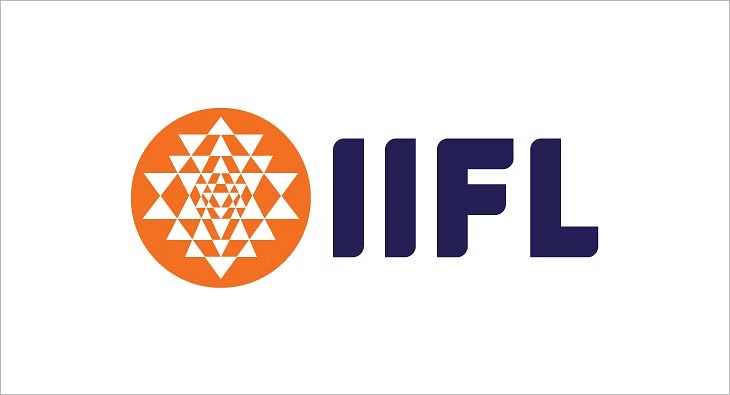
Key Points
Loan Disbursement – RBI expects lenders to prohibit cash disbursements on gold loans. – NBFCs may need to partner with banks to facilitate loan withdrawals through bank accounts.
Gold Valuation – Discrepancies exist in gold valuation methods, with differences between North and South India. – RBI prefers gold stocks to be valued based on Bombay Bullion Rates, which may not reflect local market rates.
Gold Auctioning – RBI wants lenders to adopt a more centralized auctioning process. – Gold loan companies argue that this could increase their operating costs.
Other Considerations – RBI is reviewing assaying of gold to ensure accuracy. – The new circular is expected to address operational concerns and loopholes identified by the regulator.
DHFL Bank Fraud: Dheeraj Wadhawan Rearrested
Dheeraj Wadhawan, director of DHFL, has been arrested by the CBI in connection with a ₹34,000-crore bank fraud case. He was previously granted bail on medical grounds but was arrested again after the CBI challenged the bail in the Supreme Court. Wadhawan is accused of being involved in the largest banking loan fraud case in India, cheating a consortium of 17 banks.

Key Points:
- Arrest of Dheeraj Wadhawan: Dheeraj Wadhawan was arrested by the CBI in Mumbai on May 13, 2024.
- Bank Fraud Case: Wadhawan is accused of being involved in a ₹34,000-crore bank fraud case, cheating a consortium of 17 banks.
- Previous Arrest and Bail: Wadhawan was previously arrested in the case but was granted bail on medical grounds.
- CBI’s Challenge to Bail: The CBI challenged the bail granted to Wadhawan in the Delhi High Court and Supreme Court.
- Supreme Court’s Cancellation of Bail: The Supreme Court cancelled Wadhawan’s bail on January 24, 2024, stating that the Delhi High Court had erred in granting it.
- Yes Bank Corruption Case: Wadhawan was also arrested in the Yes Bank corruption case but had obtained bail in that case.
SBI Joins IIBX as Trading-Clearing Member at GIFT City
The State Bank of India (SBI) has become the first bank to join the India International Bullion Exchange (IIBX) as a Trading-cum-Clearing (TCM) Member. This allows SBI to trade and settle bullion transactions on behalf of its clients at the IIBX platform in Gujarat’s GIFT City.

Key Points:
SBI’s TCM Membership: – SBI is the first bank to become a TCM Member of the IIBX. – This enables SBI to conduct trades and settle them on behalf of its clients.
RBI Guidelines: – RBI guidelines allow Indian bank branches in GIFT IFSC to act as TCMs of IIBX. – Special category clients (SCC) can import gold through IIBX.
Impact on IIBX: – SBI’s entry as a TCM is expected to boost trading volumes at IIBX.
SBI’s Commitment: – SBI Chairman Dinesh Khara emphasizes the bank’s commitment to innovation and excellence in the financial sector. – This move aims to enhance transparency, efficiency, and accessibility in the bullion trading market.
Public Sector Banks’ Combined Profits Soar to ₹1.4 Lakh Crore in FY24
Public sector banks (PSBs) in India achieved a cumulative profit of ₹1.4 lakh crore in the financial year 2023-24, a 35% increase from the previous year’s ₹1 lakh crore. State Bank of India (SBI) contributed over 40% of the total earnings, with a profit of ₹61,077 crore. Punjab National Bank recorded the highest net profit growth at 228%, while Punjab & Sind Bank was the only PSB to report a decline in profit. The government’s 4R strategy, including recapitalization and reforms, has played a significant role in the turnaround of PSBs.
Key Points
Profitability – PSBs’ cumulative profit reached ₹1.4 lakh crore in FY24, a 35% increase. – SBI contributed over 40% of the total earnings, with a profit of ₹61,077 crore.
Growth – Punjab National Bank had the highest net profit growth at 228%. – Union Bank of India and Central Bank of India also recorded significant growth of 62% and 61%, respectively.
Decline – Punjab & Sind Bank was the only PSB to report a decline in profit, dropping by 55%.
Government Initiatives – The government’s 4R strategy (Recognising NPAs, Resolution and recovery, Recapitalising PSBs, and Reforms) has contributed to the turnaround of PSBs. – The government infused ₹3,10,997 crore to recapitalize PSBs from 2016-17 to 2020-21. – Reforms addressed credit discipline, responsible lending, and governance.
Repco Home Finance Reports ₹108 Crore Profit in Fourth Quarter of Fiscal Year 2024
Repco Home Finance reported a 9% increase in net profit to ₹108 crore for Q4 FY24, driven by growth in loan disbursements and sanctions. The company also recommended a dividend of ₹3 per share for FY23. For the full year, net profit rose by 33% to ₹395 crore, with total income increasing to ₹1,541 crore. The loan book grew to ₹13,513 crore, with loans to the self-employed segment accounting for 51.4%.

Key Points:
Net Profit: – Q4 FY24: ₹108 crore (9% increase) – FY24: ₹395 crore (33% increase)
Dividend: – ₹3 per share for FY23
Total Income: – Q4 FY24: ₹397 crore – FY24: ₹1,541 crore
Loan Disbursements: – Q4 FY24: ₹895 crore (18% growth) – FY24: ₹3,244 crore (25% growth)
Loan Sanctions: – Q4 FY24: ₹978 crore (26% growth) – FY24: ₹3,677 crore (37% growth)
Loan Book: – As of March 2024: ₹13,513 crore – Self-employed segment: 51.4% – Salaried segment: 48.6%
Surge in Export Orders: 10% Growth Driven by US and EU Demand
India’s export order books have witnessed a significant boost, particularly in leather goods, footwear, and apparel, driven by improved demand from the European Union, West Asia, and the US. However, engineering goods exports face challenges due to geopolitical tensions.
Key Points:
Improved Demand: – Export order books have increased by at least 10% compared to six months ago. – Leather footwear, apparel, and non-leather footwear are experiencing strong demand.
Apparel Exports: – Apparel exports have increased by over 10% since February, primarily from the UK, US, and EU. – India aims to achieve $20 billion in apparel exports in FY25. – Free trade agreements with Australia and Mauritius have positively impacted exports.
Engineering Goods Exports: – Engineering goods exports have grown by 10% since December, driven by demand for hand tools, fasteners, and agricultural parts. – Inquiries have increased by 5%. – Exports to Europe are facing challenges due to geopolitical tensions.
Logistics and Currency: – Logistics issues persist, but the market is recalibrating after inventory pile-ups and geopolitical events. – Buyers have improved liquidity and are replenishing shelves. – Rupee-based trade is expected to boost exports to Russia.
Overall Demand: – The demand scenario has improved by 15% compared to six months ago. – Apparel and footwear are driving the growth.
Surge in India’s Palm Oil Imports Driven by Declining Global Prices
India’s palm oil imports witnessed a significant increase of 34.11% in April 2023, reaching 6,84,000 tonnes. This surge was driven by a decline in global prices, particularly for refined, bleached, and deodorized (RBD) palmolein and crude palm oil (CPO). Overall vegetable oil imports also rose by 26% to 13,18,528 tonnes, with palm oil accounting for 52% of the total.
Key Points:
Palm Oil Imports:
- Increased by 34.11% to 6,84,000 tonnes in April 2023.
- Accounted for 52% of India’s total edible oil imports.
- RBD palmolein imports rose to 1,24,228 tonnes.
- CPO shipments increased by 36% to 5,36,248 tonnes.
- Crude palm kernel oil imports jumped nearly 6-fold to 23,618 tonnes.
Other Edible Oil Imports:
- Soybean oil imports surged to 3,85,514 tonnes.
- Sunflower oil inflows eased to 2,34,801 tonnes.
Global Prices:
- RBD palmolein and CPO prices declined by nearly USD 100 per tonne.
- Soybean oil prices fell USD 40 per tonne.
- Sunflower oil rate dropped USD 15 per tonne.
Overall Vegetable Oil Imports:
- Increased by 26% to 13,18,528 tonnes in April 2023.
- Included non-edible oils.
Edible Oil Stockpiles:
- India held 22.45 lakh tonnes of edible oil stockpiles as of May 1, 2023.
Major Suppliers:
- Indonesia and Malaysia for RBD palmolein and CPO.
- Argentina and Brazil for soybean oil.
- Russia, Romania, and Ukraine for sunflower oil.
Allegations of Mistreatment: NewJeans Members’ Parents Accuse HYBE CEO Hitman Bang
HYBE, the K-pop giant, faces new controversy as parents of New Jeans members accuse the company of mistreatment and plagiarism. The parents allege that HYBE and its subsidiary BELIFT LAB intentionally copied New Jeans’ concept for their new girl group ILLIT, and that CEO Bang Si Hyuk has ignored the members’ greetings.
Key Points:
Allegations of Mistreatment:
- Parents of New Jeans members accuse HYBE CEO Bang Si Hyuk of ignoring the members’ greetings.
- The parents believe this behavior may harm the members’ mental health.
Plagiarism Allegations:
- The parents accuse HYBE and BELIFT LAB of plagiarizing New Jeans’ concept for their new girl group ILLIT.
- The parents claim that the similarities were intentional and that ADOR did not give permission for the copying.
Impact on New Jeans:
- The parents allege that the formation of ILLIT with a similar aesthetic has harmed New Jeans’ brand value.
- The parents express concern that the plagiarism and mistreatment will hurt New Jeans’ reputation and value.
Background:
- HYBE has been embroiled in an ongoing feud with Min Hee Jin, CEO of ADOR, over plagiarism allegations.
- New Jeans is a five-member girl group that debuted in 2022 under HYBE’s subsidiary ADOR.
- New Jeans is set to make their comeback on May 24 with an EP titled ‘How Sweet’.
RBI Monetary Policy: Sticky Inflation in India Warrants Cautious Stance
India’s steady inflation and rising food prices are likely to delay interest rate cuts by the Reserve Bank of India (RBI). Economists now expect rate cuts in the final quarter of the year, after the US Federal Reserve pivots. The RBI has maintained a hawkish stance with a benchmark interest rate of 6.5% for over a year due to inflation remaining above its 4% target.
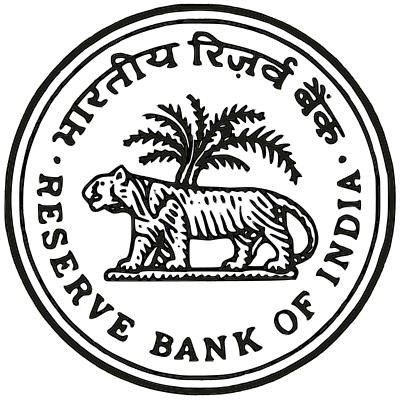
Key Points:
Inflation: – Consumer prices rose 4.83% in April from a year earlier, in line with forecasts. – Food prices rose 8.7%, contributing significantly to inflation. – Core inflation (excluding food and fuel) remained stable at 3.25%.
RBI’s Stance: – The RBI has kept interest rates unchanged at 6.5% for over a year. – Economists expect rate cuts only in the final quarter of 2024. – Citigroup economists predict a neutral stance by August, instead of June as previously projected.
Factors Influencing RBI’s Decision: – Waiting until August for a stance change would avoid market pricing of rate cuts and provide a clearer view of monsoon and global monetary policy dynamics. – Elevated food inflation is likely to prevent the RBI from implementing a policy pivot in June. – Erratic weather and heat waves could keep the overall sentiment cautious around rate cuts.
Other Factors: – India’s election, which runs until June 1, complicates the timing of any central bank easing. – Prime Minister Modi is seeking to extend his decade in power by another five years, promising to boost investment in infrastructure. – The RBI’s next rate decision is scheduled for June 7.
Indian Banks Ramp Up Cyber Insurance Coverage for FY24
Banks and financial institutions are increasing their cyber insurance coverage due to rising cyber incidents, increased claims, and regulatory scrutiny. The claims ratio for cyber insurance in the banking industry has exceeded 50%, highlighting the growing need for protection against cyber threats.
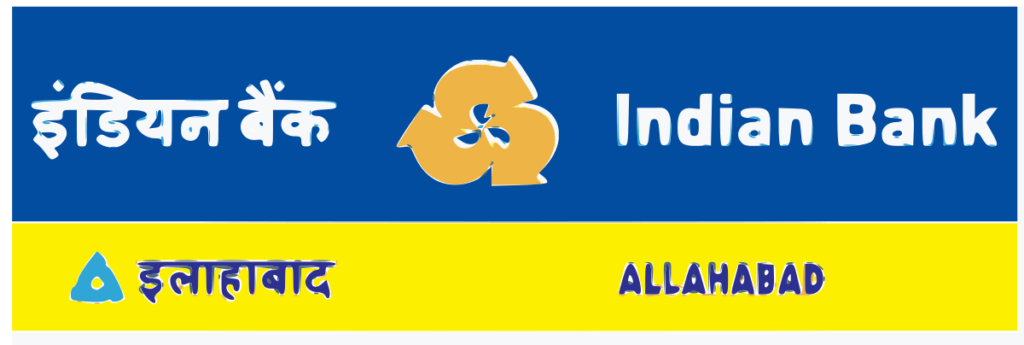
Key Points:
- Increased Cyber Incidents and Claims:
- Cyber incidents and claims have increased significantly, prompting banks to enhance their cyber insurance coverage.
- High Claims Ratio:
- The cyber insurance claims ratio in the banking industry has risen to over 50%, indicating the prevalence of cyber-related losses.
- Protection of Sensitive Data and Reputation:
- Banks prioritize protecting customer data and reputation, making cyber insurance crucial for mitigating risks.
- Evolving Cyber Threat Landscape:
- Cyber threats continue to evolve, posing challenges to financial institutions in safeguarding their digital assets.
- Outsourcing Risks:
- Outsourcing IT services to third parties introduces additional cyber risks for banks.
- Digital Expansion and Vulnerability:
- The banking sector’s expansion into the digital space has increased their vulnerability to cyber-attacks.
- Combined Cyber Insurance Policies:
- Banks typically combine cyber risk and cybercrime insurance policies with traditional Bankers Blanket Indemnity policies.
- Bankers Blanket Indemnity Policy:
- This policy protects banks from financial losses due to theft, fraud, and dishonesty.
- Improved Coverage for Business Interruption and Ransomware:
- Banks are demanding improved coverage for business interruption and ransomware protection.
- Regulatory Focus on Cyber Security:
- Regulatory scrutiny on cyber security has driven the demand for cyber insurance among banks and financial institutions.
Highway Ministry Achieves 20% of Annual Capital Expenditure Goal in April 2024
The Ministry of Road Transport and Highways (Morth) has made significant progress in capital expenditure (capex) for highway construction in April 2023, despite delays in project awards in the second half of 2023. The ministry has spent over Rs 54,500 crore, meeting 20.04% of its capex target with 11 months remaining. This early execution of capex is part of the government’s strategy to ensure infrastructure development does not suffer from backlogs.
Key Points:
1. Capex Progress: – Morth has spent over Rs 54,500 crore on highway construction in April 2023. – The ministry has met 20.04% of its capex target with 11 months remaining.
2. Front-Loading of Capex: – Morth has been a front runner in early execution of capex. – This is the first time the ministry has spent over Rs 50,000 crore in the opening month of the financial year.
3. Project Pipeline: – There is a healthy pipeline of projects by the National Highways Authority of India (NHAI). – Impacts of the Bharatmala slowdown will be more pronounced in FY26.
4. Bharatmala Delay: – The delay in approval of the Revised Estimates of the Bharatmala project has led to a Rs 5 trillion increase in costs. – This is expected to impact construction progress in FY2024-25.
5. National Highway Construction: – National highway construction figures have gone down in the first month of the fiscal year due to the Lok Sabha elections. – Morth constructed 483 kilometers of National Highways in April 2023, compared to 523 kilometers in April 2022.
6. Future Plans: – Morth is deliberating programs for the first 100 days of the new government and for Viksit Bharat. – The Vision 2047 Cabinet Note is expected to replace the Bharatmala project.
Sebi to Implement Stricter Regulations for Small Business Listings Amidst Misuse Concerns
India’s Securities and Exchange Board of India (Sebi) and exchanges are tightening regulations for public offerings by small and medium enterprises (SMEs) due to concerns about misuse of a listing platform introduced in 2012. The new rules aim to ensure that only serious companies access the capital markets and protect investor interests.

Key Points:
Minimum Issue Size: – Sebi is considering raising the minimum size of SME public offers to Rs 30 crore-Rs 50 crore ($3.59 million-$5.99 million).
Increased Disclosures: – Companies will be required to make more upfront disclosures about the purpose of the issue, financials, and risk factors.
Merchant Banker Responsibilities: – Merchant bankers will be held responsible for ensuring accurate disclosures.
Misuse Concerns: – Sebi has received complaints of price manipulation and misuse of funds in the SME listing segment.
Enforcement Actions: – Sebi has barred three SME companies from capital markets for misusing funds raised through public offers.
Investor Due Diligence: – Sebi advises retail investors to exercise due diligence and not be swayed by attractive returns when investing in SME companies.
Market Intermediaries Urge Sebi to Relax Penalties for Technology-Related Errors
Market infrastructure institutions (MIIs) have requested the Securities and Exchanges Board of India (Sebi) to reconsider financial disincentives imposed on key officials in the event of technical glitches. MIIs argue that the current rules are stringent and could deter talent, while glitches are inevitable due to the complexity of trading systems.
Key Points:
Financial Disincentives: – Sebi introduced financial disincentives for MIIs and their officials in 2021 in response to technical glitches. – The penalty includes a 10% deduction from the annual pay of the managing director and chief technical officer.
MII Request: – MIIs have formally requested the removal of the penalty from the pay of the managing director and chief technical officer. – They believe the disincentives are excessive and could discourage qualified individuals from joining the industry.
Working Group Recommendations: – A working group has suggested that Sebi reject the MII submissions regarding financial penalties. – However, the group supports removing the requirement to publish details of disincentives on MII websites.
Sebi’s Expectations: – Sebi expects MIIs to prioritize system preparedness, risk management, and IT infrastructure planning to minimize glitches. – The regulator believes that financial penalties are necessary to ensure that MIIs take appropriate measures to prevent and mitigate technical issues.
Penalty Allocation: – Penalties collected from MIIs are allocated to the Investor Protection Fund or the Core Settlement Guarantee Fund.
NSE Glitch and Settlement: – A major technical issue at the National Stock Exchange (NSE) in 2021 prompted Sebi to implement the SOP. – NSE and NSE Clearing settled with Sebi for Rs 49.8 crore and Rs 22.9 crore, respectively. – The NSE’s then managing director and other officials were required to perform community service for investor education.
Recent Snags: – The article mentions recent technical glitches at MCX, Nasdaq, and the National Stock Exchange.
